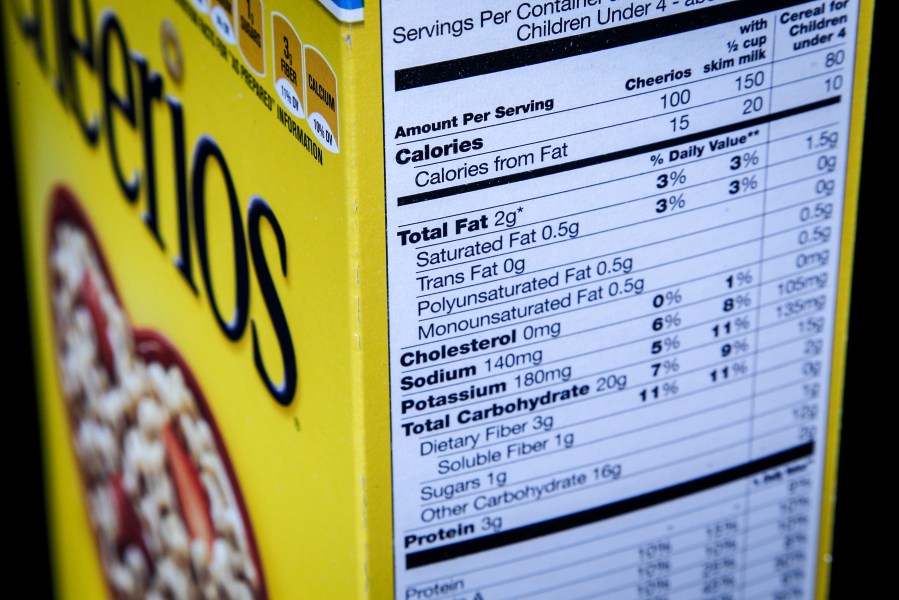Changes to expect in your child’s school lunches under new USDA nutrition standards
The U.S. Department of Agriculture (USDA) on Friday proposed major changes to school lunches in an attempt to make the meals healthier, with particular emphasis on reducing sugar and salt.
The plan, which is set for a 60-day public comment period starting Tuesday, is a multiyear effort that was developed with input from school nutrition professionals, public health experts, industry and parents, according to the statement from the department.
The USDA found the biggest concerns from stakeholders in the conversation were the amount of added sugar in school lunches and the amount of time the industry needs to make these changes to school meals.
“Our commitment to the school meal programs comes from a common goal we all share — keeping kids healthy and helping them reach their full potential,” said Agriculture Secretary Tom Vilsack.
“Many children aren’t getting the nutrition they need, and diet-related diseases are on the rise. Research shows school meals are the healthiest meals in a day for most kids, proving that they are an important tool for giving kids access to the nutrition they need for a bright future.”
Not everyone, however, is a fan of the proposed changes.
“Research shows students receive their healthiest meals at school, thanks to current nutrition standards,” said School Nutrition Association (SNA) President Lori Adkins. “As schools nationwide contend with persistent supply chain, labor and financial challenges, school meal programs are struggling to successfully maintain current standards and need support, not additional, unrealistic requirements.”
Here are the major changes proposed for your child’s school meals:
Limiting added sugars

The new plan proposed by the USDA will have a public comment period so parents and others will be able to give their feedback on these changes. (AP Photo/J. David Ake, File)
The USDA is planning on limiting added sugars in a two-part plan.
The first phase of the plan is limiting added sugars in products that are particularly high in them, such as breakfast cereals, flavored milks, grain-based desserts and yogurt.
Currently, there is no limit on added sugar in school lunches. With the changes, breakfast cereals would only be allowed 6 grams of added sugars per dry ounce, yogurt would be no more than 12 grams of added sugars per 6 ounces, flavored milks would be no more than 10 grams of added sugars per 8 fluid ounces and grain-based desserts would be no more than 2-ounce equivalents per week in school breakfast.
The goal is to cap added sugars in these products by 2025, but the USDA also wants to implement a weekly overall limit in the 2027-2028 school year: no more than 10 percent of a child’s calories for a given week could be added sugars.
The reductions were praised by the American Heart Association, which has advocated for such changes.
“By proposing to limit the amount of added sugars in school meals for the first time ever, the USDA is taking a major step toward helping children achieve a more nutritious diet and better health,” the organization said. “Added sugars are a significant source of excess calories, provide no nutritional value and may cause weight gain and increased risk for cardiovascular disease, diabetes and other chronic health conditions.”
More whole grains

The new changes to school meals, if adopted, would take until 2029 to complete. (AP Photo/Larry Crowe)
The USDA wants to make whole grains the main grain option available as they “are a key source of fiber and can help support healthy digestion and lower the risk of cardiovascular disease, stroke, and diabetes.”
There are two options the department wants feedback on in the public comment period for the proposal. One would be keeping the current standard, which says schools must make whole grain-rich options 80 percent of all grains offered in a week. The other would only allow schools to serve non-whole, enriched grain foods one day a week.
The change, if adopted, would be among the quickest implemented, in fall 2024.
The American Heart Association had hoped for a 100 percent transition into whole grains, but is hopeful about the plan.
“We appreciate that the proposed standards continue to emphasize the importance of whole grains. While we would like to see USDA reinstate the 100% whole grain-rich requirement, the proposed standard would still encourage whole grain consumption while giving schools some flexibility when menu planning,” the group said.
Reduce sodium intake

Less sodium in school lunches would put them more in line with FDA recommendations. (AP Photo/Charles Krupa)
The USDA proposes a 30 percent reduction in sodium in school lunches, but spread out over time to give school cooks, the food industry and children’s palates time to adjust.
Three separate 10-percent reductions in sodium would be seen in the autumns of 2025, 2027 and 2029.
“Research shows that nearly all children consume more sodium than recommended, which can lead to high blood pressure and heart disease,” the USDA said.
However, the change, along with others in the proposal, is not backed by the SNA, which argues supply chain issues and national shortages make the goals unachievable.
The group points to a survey of school meal program directors that shows many are already struggling with the current nutrition standards.
“With no end in sight to supply chain and labor challenges, a majority of survey respondents also indicated concerns about proposals to establish long-term standards that exceed Target 1A transitional sodium limits (98.3%) and limit added sugar (94.4%),” SNA said.
Changes to milk consumption

It is possible the milk standards under the new proposals will not change. (AP Photo/J. Scott Applewhite)
The proposed standards would continue allowing flavored milks, but aim to encourage students to choose fat-free and low-fat milk options. They include an optional limiting of flavored milk for those in grades nine or above, or else leaving flavored milk options for all grades.
If the standard does change, it would be implemented in fall 2025.
Copyright 2023 Nexstar Media Inc. All rights reserved. This material may not be published, broadcast, rewritten, or redistributed.

